
They say the best stories are true, and that stands surprisingly true in ‘The Old Man and the Gun’ (2019), by David Lowery. Based on David Grann‘s article of the same title from The New Yorker–which later made it into his second non-fiction book, ‘The Devil and Sherlock Holmes’, the movie tells the real life story of Forrest Tucker, charming old man and bank robber extraordinaire.
Written and directed by Lowery, ‘The Old Man and the Gun’ is an homage to both 1970s cinema and Robert Redford, who bows out gracefully in this last acting role at the age of 82, and with a titanic list of cinematic accomplishments. Among them are, naturally, an Academy Award for Best Director thanks to ‘Ordinary People’ (1980), a Lifetime Achievement Academy Award, and a BAFTA Award for Best Actor in a Leading Role, in ‘Butch Cassidy and the Sundance Kid’ (1969).
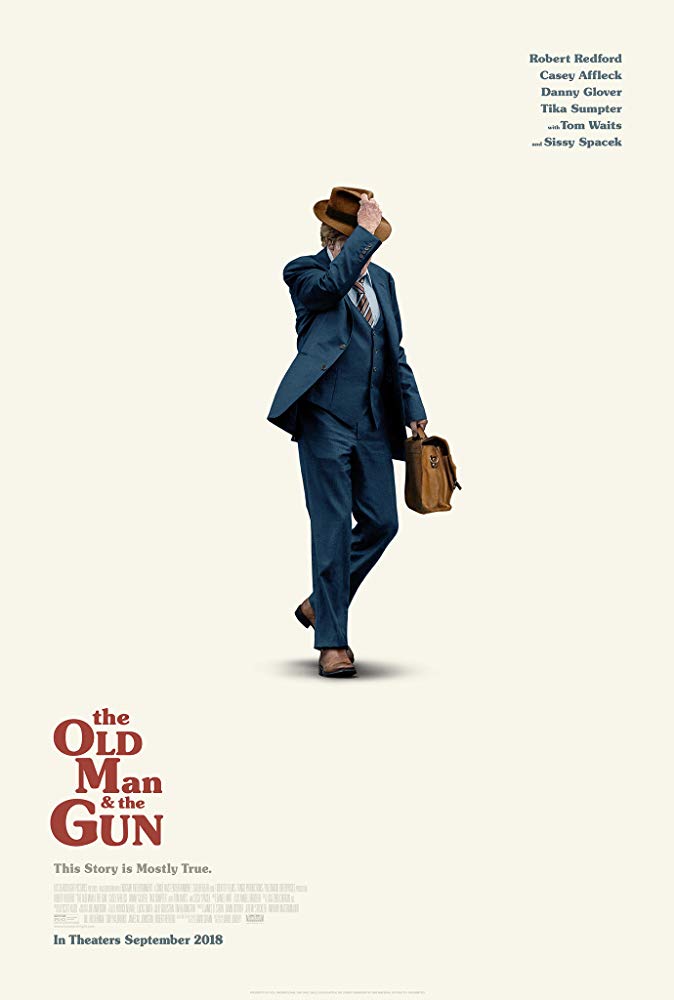 CREDIT: TWENTIETH CENTURY FOX FILM CORPORATION
CREDIT: TWENTIETH CENTURY FOX FILM CORPORATION
Filmed across the United States–mainly in Ohio and Texas, the film earned a series of glowing reviews, including a 93% score from Rotten Tomatoes, along with a Golden Globe nomination for Robert Redford’s performance. Its festival circuit reception was bright, as well, gathering nominations at the Cork International Film Festival, Dublin Film Critics Circle Awards, and the London Film Festival for directing, cinematography, and Best Film, respectively.
The story follows Forrest Tucker in the sunset of his life, working with his long-time crew of talented and resourceful criminal friends, as he continues to make the best use of his good looks, dapper sense of style, courteous approach and downright devilish charm to rob banks. He is, in fact, so good at what he does, that he doesn’t even use a gun–though he always brings it with him. It only serves the purpose of making a statement, at best. By the time he’s done, the bank managers and tellers only remember how nice he was, as they handed him thousands of dollars in cash.
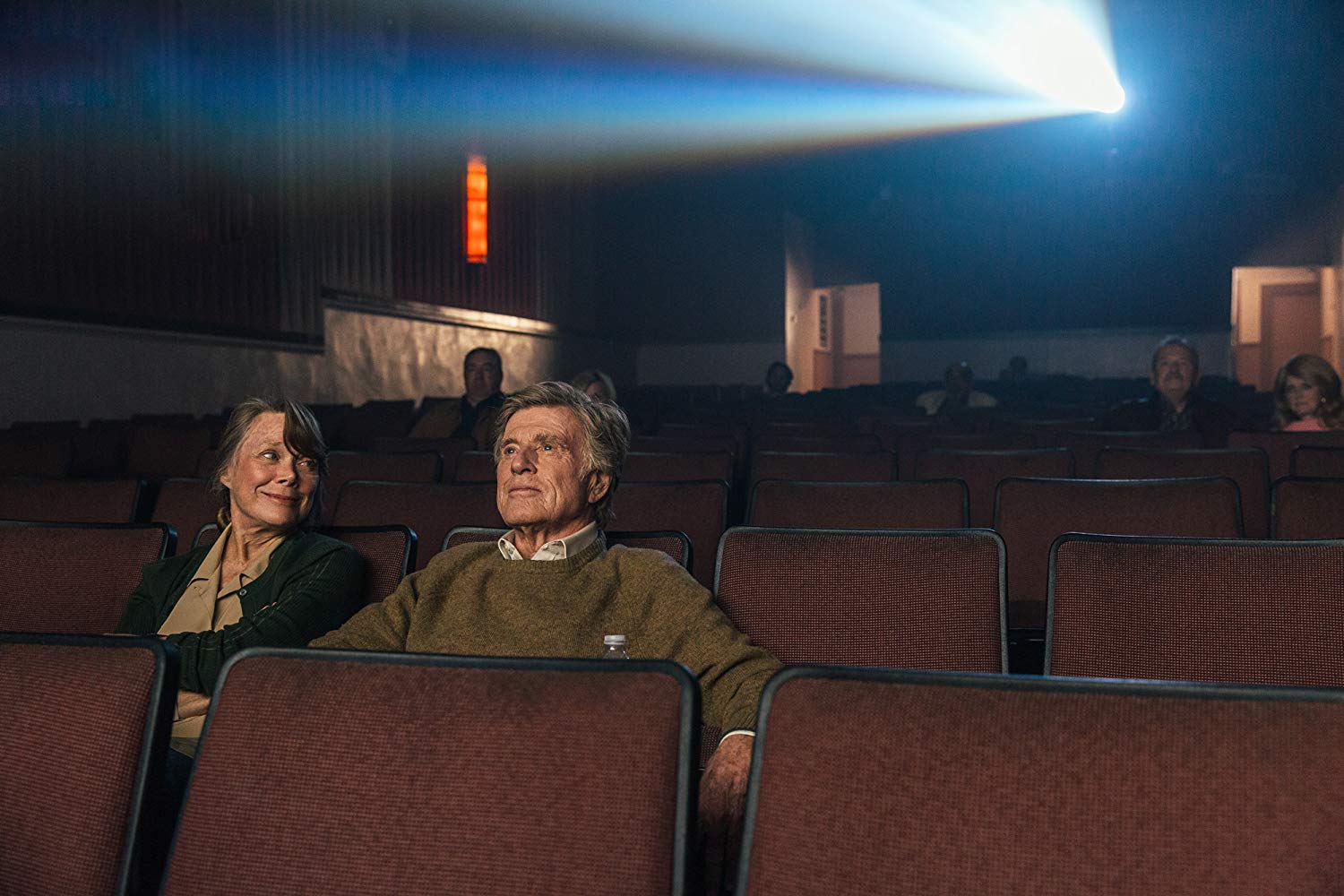 CREDIT: TWENTIETH CENTURY FOX FILM CORPORATION
CREDIT: TWENTIETH CENTURY FOX FILM CORPORATION
Robert Redford plays Forrest Tucker by bringing in his signature flashing smiles and twinkling eyes, much in the way he played throughout the ’60s and ’70s, and we can’t help but love him for it. His character is tested when he crosses paths with John Hunt, played by Casey Affleck, the policeman who identified Tucker’s robbery patterns in the first place, and when he falls for Jewel, brilliantly portrayed by Sissy Spacek. Jewel loves Tucker, even though she knows exactly what he does for a living.
Danny Glover steps in as Teddy Green, and Tom Waits is John Waller, Tucker’s partners in crime. Green was an escape artist who met Tucker during his 1950s stint in Alcatraz, while Waller was Tucker’s escape mate when they fled San Quentin back in 1979. Thanks to Hunt’s detective work, they eventually became known as the Over-the-Hill Gang.
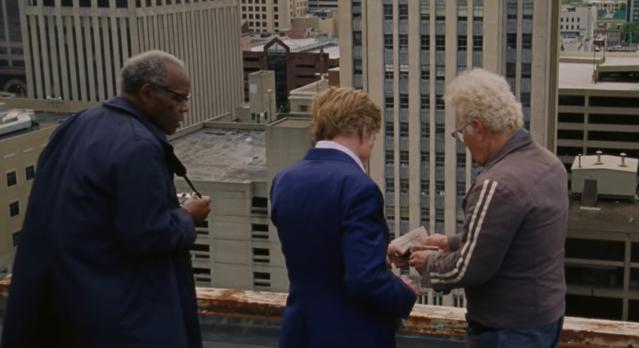 CREDIT: TWENTIETH CENTURY FOX FILM CORPORATION
CREDIT: TWENTIETH CENTURY FOX FILM CORPORATION
All in all, the cast is beyond illustrious, with four Academy Award winners–Robert Redford, Keith Carradine, Sissy Spacek, and Casey Affleck, plus one nominee, Tom Waits.
The story takes us to 1981, and its entire production is a combination of classic cinematography methods combined with modern technology, which not only accomplishes a faithful rendition of that time, it also takes us deep into its folds.
Much like Affleck’s character, we, too, find ourselves impressed by Tucker’s ability to elude the law and get bank staff to basically give him the money without a single objection. Of course, only part of that is owed to the true story of Forrest Tucker. The rest is all Robert Redford’s superior acting. Even in the twilight of his career, Redford stands out, capable of becoming a man who fascinated the world and gathered flashy headlines in the media for years.
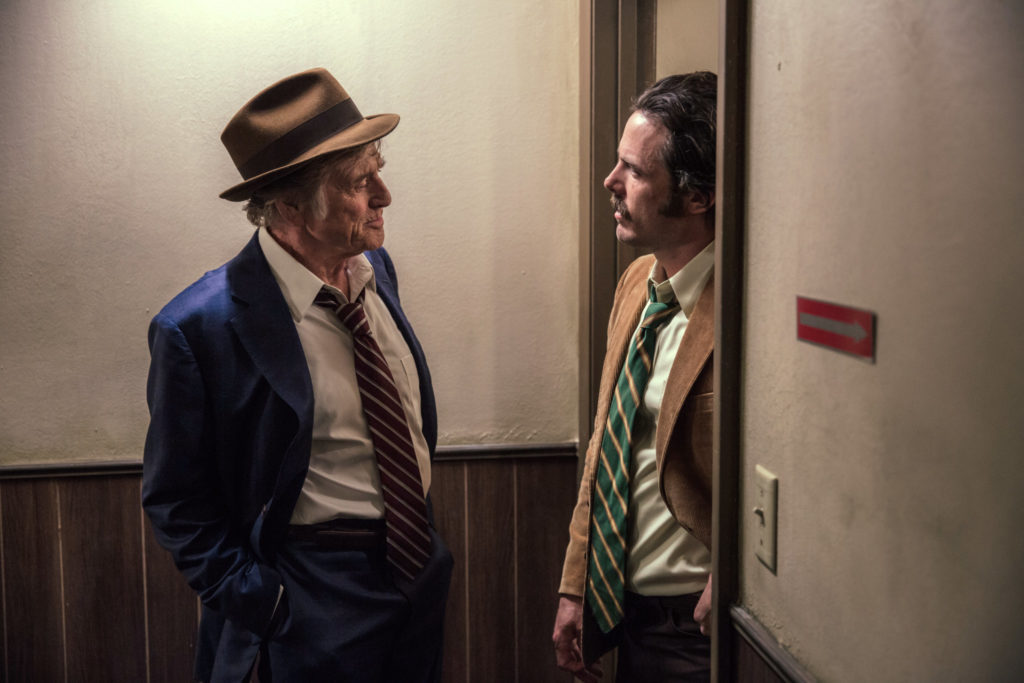 CREDIT: TWENTIETH CENTURY FOX FILM CORPORATION
CREDIT: TWENTIETH CENTURY FOX FILM CORPORATION
What is most loved about Redford’s portrait of Forrest Tucker is the way in which he brings out the old robber’s philosophy–you see, Tucker didn’t rob banks to make a living. He did it because it made him feel alive. It was his way of experiencing life to its fullest, a constant cycle of stealing and doing time and escaping from high security prisons, simply because he could. Much like Redford, Tucker’s career also spanned decades.
Sissy Spacek’s Jewel captures our hearts as much as it does Tucker’s. Her onscreen chemistry with Redford is simply undeniable, and we cannot help but root for these two as a couple. Despite Tucker’s criminal endeavours, we wish for their happy ending. To some level, even Hunt has a slight hesitation when it comes to capturing him–a man like Forrest Tucker is such a unique character to come across.
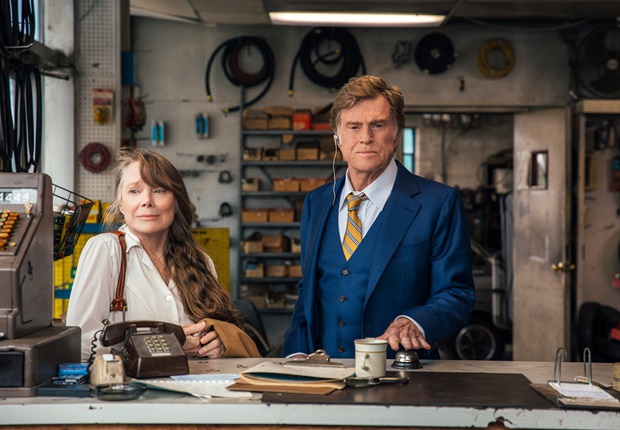 CREDIT: TWENTIETH CENTURY FOX FILM CORPORATION
CREDIT: TWENTIETH CENTURY FOX FILM CORPORATION
However, it isn’t just the performances that stand out here. Along with the film score, composed by Daniel Hart, Joe Anderson’s cinematography is a masterpiece of camera movements and montages that are each worth their own round of applause. Worth noting is the fact that Daniel Lowery tends to work with the same industry talents on most of his projects so far–likely because their collaborations have been successful on a professional level, and that he trusts them. For instance, Hart also composed the scores for ‘Pete’s Dragon’ (2016) and ‘A Ghost Story’ (2017), while Anderson did the cinematography for ‘Ain’t Them Bodies Saints’ (2013), where Lowery also worked with Casey Affleck. Naturally, ‘The Old Man and the Gun’ was bound by synergy from pre-production.
The cinematography is stupendous, to say the least, as Lowery and Anderson managed to shoot a film with plenty of car chases, crashes and stunts, and made it look and feel authentic, even though they only had an independent film budget to work with. Anderson’s expertise and Lowery’s experience came together to complete one another, delivering a true work of audiovisual distinction.
‘The Old Man and the Gun’ was filmed on Super 16mm film, a challenge to which Anderson rose proficiently. Combined with a series of superb montages and long panoramic shots, the movie was enhanced by the older, classic look with a grainy feel and exquisite colorization by Alex Bickel, best known for his work on ‘Moonlight’ (2018).
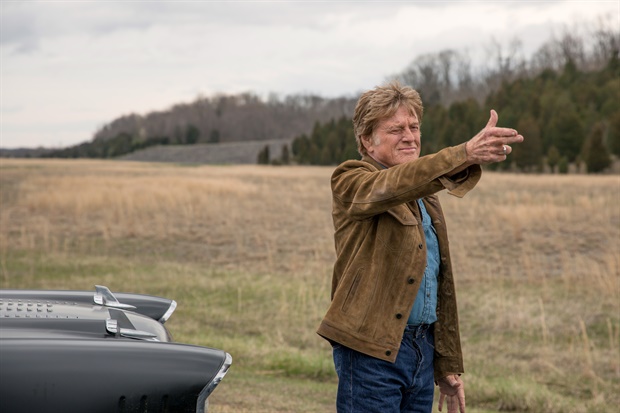 CREDIT: TWENTIETH CENTURY FOX FILM CORPORATION
CREDIT: TWENTIETH CENTURY FOX FILM CORPORATION
Zoom shots were key, included by Lowery early on into the script, and seamlessly executed by Anderson. Both knew they would be the best and most heartfelt manner of bringing back the stately charm of ’70s cinema, to which Robert Redford is anything but a stranger.
Loved by viewers and critics alike, the montages play a crucial part in understanding Redford’s character. A gargantuan amount of work and detailed planning went into them, especially considering the medium they filmed in–Super 18 requires great care and attention, as well as a hefty amount of additional editing in post-production.
The crown jewel of ‘The Old Man and the Gun’ was definitely the last montage, a masterpiece comprising mostly from scenes where Redford’s character is shot from the back or a partial side, forcing us to imagine a younger Redford without actually seeing him clearly. However, there is one sequence where we do see him, and it was borrowed from one of his older films–specifically, Arthur Penn’s ‘The Chase’ (1966), a classic to this day. This assortment of flashbacks tells us about Forrest Tucker through his numerous escapes from prison, that he is relentless in his quest for freedom to do and live as he pleases.
Moving on from the beautiful cinematography, it is worth giving David Lowery an appreciative nod for the references to Redford’s younger days, including the opening credits which so aptly remind us of ‘Butch Cassidy and the Sundance Kid’ (1969). Such ‘Easter eggs’ were absolutely wonderful additions to what is Redford’s last performance and a sweet farewell that stays true to the onscreen persona he has bewitched us with for so many years.
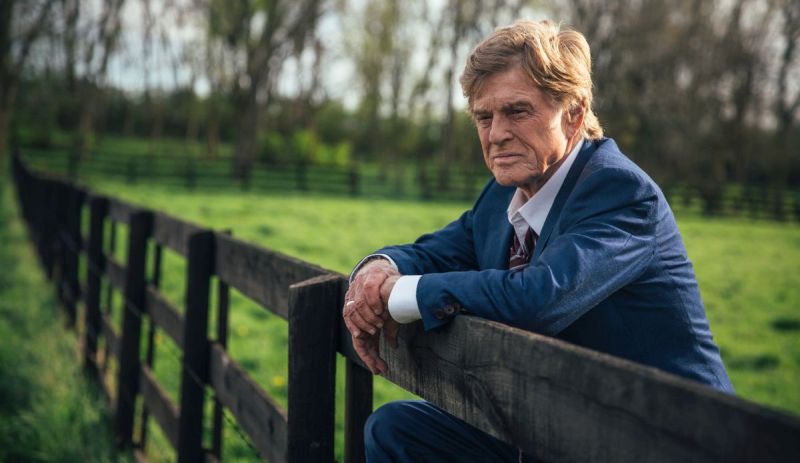 CREDIT: TWENTIETH CENTURY FOX FILM CORPORATION
CREDIT: TWENTIETH CENTURY FOX FILM CORPORATION
‘The Old Man and the Gun’ is, by all intents and purposes, the masterful adieu that both Robert Redford and Forrest Tucker deserved. A legend plays a legend in this ‘dramedy’ that weaves threads of the past into the present to depict a single man’s ambition to live his life to the fullest, criminal record be damned.
It will not come as a surprise, then, to learn that Redford was the one who approached Lowery about adapting David Grann’s New Yorker article, though it did take quite a few drafts to create the kind of Forrest Tucker that Tucker himself would’ve wanted to see. The actor then had to step into the man’s shoes, to the collective elation of many.
Despite its independent budget and its modest opening weekend of just $142,000 in a limited release, ‘The Old Man and the Gun’ reached a gross $16 million worldwide budget. It couldn’t have been an easy feat, and it’s reasonable to assume that Redford’s name played a principal role in the marketing strategy, but the success is also attributed to David Lowery’s writing and directing. He is one of the best filmmakers of today, with a wide range of interests and a tendency to make liberal use of multiple media styles to tell stories.
His is a promising talent, and we hope to see more of him soon. Given his current track record, Lowery stands to leave quite the imprint on the world of cinema. There wasn’t a better director for Robert Redford to work with for his last performance, and ‘The Old Man and the Gun’ proves it.
Jules R. Simion
Jules is a writer, screenwriter, and lover of all things cinematic. She has spent most of her adult life crafting stories and watching films, both feature-length and shorts. Jules enjoys peeling away at the layers of each production, from screenplay to post-production, in order to reveal what truly makes the story work.
An Interview with Anna Drubich
Anna Drubich is a Russian-born composer of both concert and film music, and has studied across…
A Conversation with Adam Janota Bzowski
Adam Janota Bzowski is a London-based composer and sound designer who has been working in film and…
Interview: Rebekka Karijord on the Process of Scoring Songs of Earth
Songs of Earth is Margreth Olin’s critically acclaimed nature documentary which is both an intimate…
Don't miss out
Cinematic stories delivered straight to your inbox.
Ridiculously Effective PR & Marketing
Wolkh is a full-service creative agency specialising in PR, Marketing and Branding for Film, TV, Interactive Entertainment and Performing Arts.


